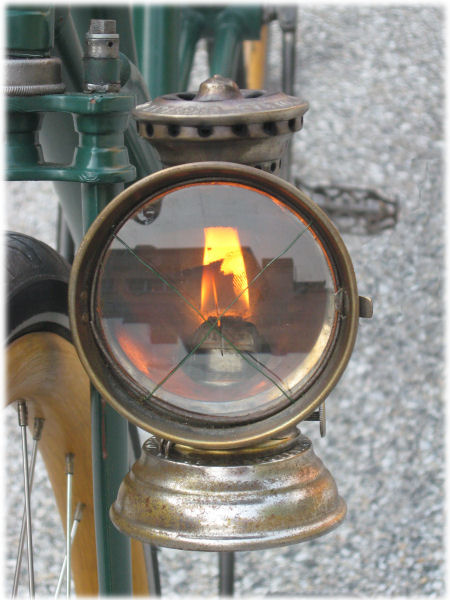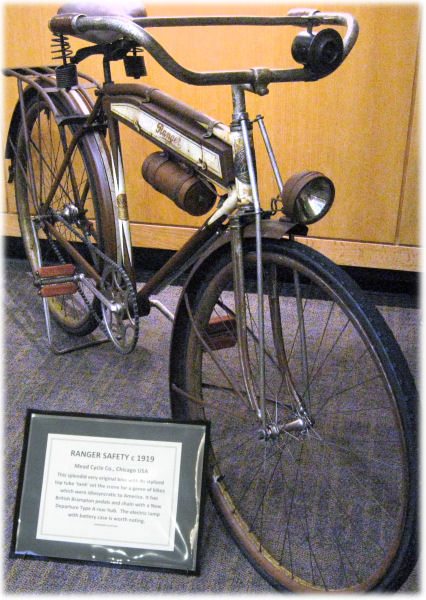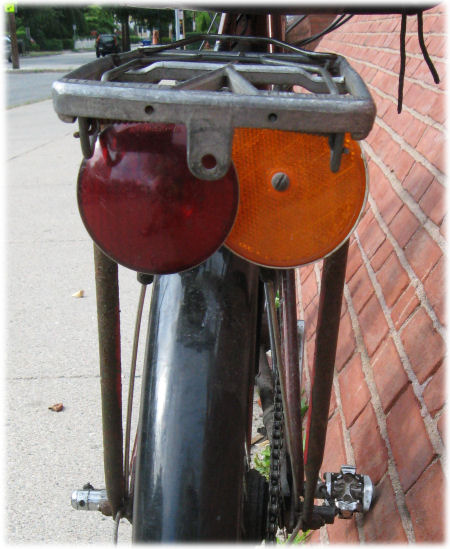When it comes to cycling, safety isn’t just a priority—it’s essential. A rear bicycle light isn’t merely an accessory; it’s a lifeline that ensures visibility on the road. Whether you’re an experienced cyclist or a casual rider, the right rear light can mean the difference between being seen or blending into the shadows. Let’s delve into why a quality rear bicycle light is a must-have and how to choose one that suits your needs.
Why a Rear Bicycle Light Is Essential

Imagine cycling home as dusk sets in. The roads are bustling, visibility is dropping, and you’re navigating between cars and pedestrians. Without a rear light, you’re practically invisible—a dangerous scenario that’s all too common.
A rear light ensures you’re noticed, even in low-light conditions, reducing the risk of accidents. Beyond personal safety, many areas legally require cyclists to have a functioning rear light when riding after dark. It’s a simple yet effective investment in your safety and compliance with traffic laws.
Key Features to Look for in a Rear Bicycle Light
Not all rear lights are created equal, and choosing the right one requires a bit of know-how. Here’s a breakdown of the essential features to consider:
1. Brightness
The brightness of a bicycle light is measured in lumens. For city riding, a light with 50–100 lumens is usually sufficient. However, if you frequently ride on unlit rural roads, opt for a brighter light, ranging from 100 to 200 lumens. Brighter lights ensure maximum visibility, even in the darkest conditions.
2. Battery Life
Long battery life is critical, especially for extended rides. Rechargeable lights are an eco-friendly option, often lasting longer and saving money in the long run. Look for lights that can last at least as long as your average ride, and always check the manufacturer’s specifications.
3. Mounting Options
Your light should mount securely and easily to your bike. Most rear lights attach to the seat post, but some can be mounted on saddle bags or rear racks. Adjustable mounts allow you to position the light for optimal visibility.
4. Modes
Modern rear lights come with multiple modes, such as steady, flashing, or pulsing. A flashing mode is ideal for grabbing attention during the day, while a steady beam works better in low-light conditions. The more options you have, the more adaptable your light will be.
5. Waterproofing
Your rear light must perform in all weather conditions. Look for a high waterproof rating, like IPX4 or higher, to ensure it withstands rain and splashes.
Types of Rear Bicycle Lights

There’s a wide variety of rear bicycle lights to choose from, each catering to different needs and preferences. Here are the most common types:
1. LED Lights
LED lights dominate the market thanks to their energy efficiency, brightness, and durability. Compact and powerful, these lights are ideal for most riders.
2. Rechargeable Lights
Convenient and eco-friendly, rechargeable lights can be powered via USB, making them easy to recharge at home or work. They’re cost-effective and eliminate the hassle of replacing batteries.
3. Solar-Powered Lights
For the eco-conscious cyclist, solar-powered lights offer a sustainable option. These lights charge during the day and illuminate your rides at night. However, their effectiveness may be limited in areas with low sunlight.

4. Dynamo Lights
Powered by your bike’s motion, dynamo lights are perfect for long-distance riders. They eliminate the need for batteries, ensuring consistent performance on extended trips.
How to Properly Install Your Rear Bicycle Light
Installing your rear bicycle light correctly is crucial for ensuring visibility and safety. Follow these steps for a hassle-free setup:
- Choose the Right Spot: Most rear lights are mounted on the seat post, but some can be attached to a saddlebag or rear rack. Select a position that offers maximum visibility.
- Secure the Mount: Attach the mount tightly to prevent wobbling but avoid over-tightening to protect your bike frame.
- Attach the Light: Snap or slide the light onto the mount. Ensure it’s facing backward and angled slightly upward for optimal visibility.
- Test It: Turn on the light and check its brightness and angle from a distance. Adjust if necessary.
Maximizing the Effectiveness of Your Rear Light
To get the most out of your rear bicycle light, follow these tips:
- Keep It Clean: Dust and grime can reduce the light’s output. Wipe it down regularly to maintain brightness.
- Use It During the Day: A flashing rear light during daylight hours significantly improves your visibility to other road users.
- Carry a Backup: For longer rides, consider carrying an extra light or spare batteries to avoid being left in the dark.
- Combine with Reflective Gear: Pair your rear light with reflective clothing or accessories for enhanced visibility, especially in low-light conditions.

Top Picks: The Best Rear Bicycle Lights
If you’re overwhelmed by choices, here are a few top-rated rear bicycle lights to consider:
- Bontrager Flare RT: Known for its brightness and impressive battery life, this light is a favorite among city cyclists.
- Cygolite Hotshot Pro 200: Offering multiple modes and USB charging, this versatile light is suitable for various riding conditions.
- Lezyne Zecto Drive Max: Compact, weather-resistant, and durable, this light is built to last in all weather.
- Garmin Varia RTL515: A premium option with radar functionality that alerts you to approaching vehicles.
Why Rear Lights Are Still Relevant in a Tech-Savvy World
With advancements in cycling technology, you might wonder if traditional rear lights are becoming obsolete. The truth is, they remain irreplaceable. Unlike digital devices, rear lights don’t rely on signals or batteries that can unexpectedly fail. Their simplicity and reliability make them a timeless choice for ensuring cyclist safety.
Even as GPS systems and smart helmets evolve, the rear light remains a crucial part of any cyclist’s safety gear. Its universal recognition and effectiveness keep it relevant in both urban and rural environments.
Conclusion
A rear bicycle light is more than just a tool—it’s a lifeline that ensures your safety on the road. Whether you’re navigating busy city streets or cycling along quiet country lanes, a reliable rear light keeps you visible and reduces the risk of accidents.
From selecting the right brightness and battery life to ensuring proper installation, choosing the perfect rear light doesn’t have to be complicated. By investing in a high-quality light and using it consistently, you can ride with confidence, knowing you’re seen and safe on every journey.


